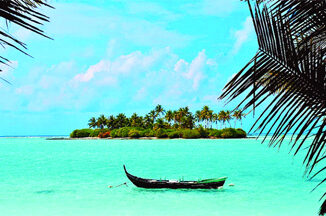
With a stunning backdrop of the mighty Himalayan ranges, the Valley of Flowers National Park presents an ethereal view and an unforgettable experience for visitors. Spread over an area of 87 sq km in the Chamoli district, the Valley of Flowers National Park is a UNESCO World Heritage Site and forms one of the two core zones (the other being the Nanda Devi National Park) of the Nanda Devi Biosphere Reserve.
The valley is believed to have been discovered in 1931, when three British mountaineers – led by Frank S Smythe – lost their way and chanced upon this spectacular valley. Attracted by the beauty of this place they named it the “Valley of Flowers”.
As the name suggests, Valley of Flowers is a destination where nature blooms in full glory offering a breathtaking experience. Exotic flowers (over 600 species) like orchids, poppies, primulas, marigold, daisies and anemones are an eye-catching spectacle. Sub-alpine forests birch and rhododendron cover parts of the park’s area. The trek to the valley offers eye-catching spectacles like cascading waterfalls and wild streams. Situated at an altitude of around 3,600 m above the sea level, the valley is also home to such rare and amazing wildlife species like the gray langur, the flying squirrel, the Himalayan weasel, and black bear, the red fox, the lime butterfly, the snow leopard and Himalayan monal, to name a few.
When to visit
The flowers here can be best viewed between the months of May and October, a time when the area turns into a botanical wonderland although maximum abundance of flowers is during July to September.
Valley of Flowers National Park
Resting in the Western Himalayas, the Valley of Flowers in Uttarakhand is a lively and beautiful national park famous for its meadows of alpine flowers. Combined with Nanda Devi National Park, the two of them together constitute the Nanda Devi Biosphere Reserve. It was also included in the list of the World Heritage Sites by UNESCO in 2005. Initially known as Bhyundar Valley, its name was changed to Valley of Flowers by the British mountaineer Frank S Smythe in the year 1931. Gifted with a diverse range of flora and fauna, this picturesque beauty is one of its kind. Situated high in the lofty Himalayas of the Garhwal region, this enchanting valley is also considered as the place from where Hanuman collected Sanjeevani Buti to cure Lakshmana.
The verdant pastures, beautiful mountains, and running streams attract millions of tourists every year from all over the world. No human settlements are present inside the park and grazing is completely banned. Since it is a UNESCO World Heritage Site, many international travellers visit the biosphere reserve. Situated in the transition zone between Eastern and Western Himalayan flora, seven restricted-range bird species are prevalent in this part of the Himalayas. The trek to the valley of flowers is indeed a one to remember for it is lined up with wild rose bushes, perfumed wildflowers and wild strawberries. It is a must-visit place for all those who love serenity combined with nature’s beauty.
Flora and Fauna
The entire valley is covered with flowers of every colour and type which gives a magical quality to the place. It has more than 650 species of flowers present including Blue Poppy, Cobra Lily, and Brahmakamal. The area is also home to several rare and engendered animals. A diverse population of fauna can be found in the valley including Asiatic black bear, blue sheep, brown bear, blue sheep, black and brown bears, and yellow-throated marten. A variety of birds too can be found here including the Himalayan golden eagle, Himalayan snow cock, sparrow, snow pigeon, and Himalayan monal.
The park also contains a high diversity as well as a density of flora and fauna of the west biographic zone with threatened species including Himalayan musk deer, snow leopard and other plant species. Spread over an area of 71,210 hectares, the park has a buffer zone surrounding it measuring 514,857 hectares. Populations of Galliformes and mountain ungulates which are prey to snow leopard and other carnivores are supported in this entire area located in the Western Himalayas Endemic Bird Area.
The trek of Valley of Flowers is bound to give you one of the most beautiful trekking experiences. The trek begins at the Pulna Village or Govindghat after crossing the Alaknanda River across the hanging bridge. You can view the snow-clad peaks between the green and the Rocky Mountains after passing the Pulna village. The 7 km track between Pulna and Bhyundar Village comprises of cold water springs and waterfalls. The area appears pink and dark red due to the presence of Rhododendrons in the region.
After resting for some time, the trek continues on the right bank of the Laxman Ganga till a log bridge is encountered. After crossing over to the left bank, the trail becomes steeper. You will reach Ghangharia which is the base camp of treks to Valley of Flowers 2 km from here.





Be the first to comment